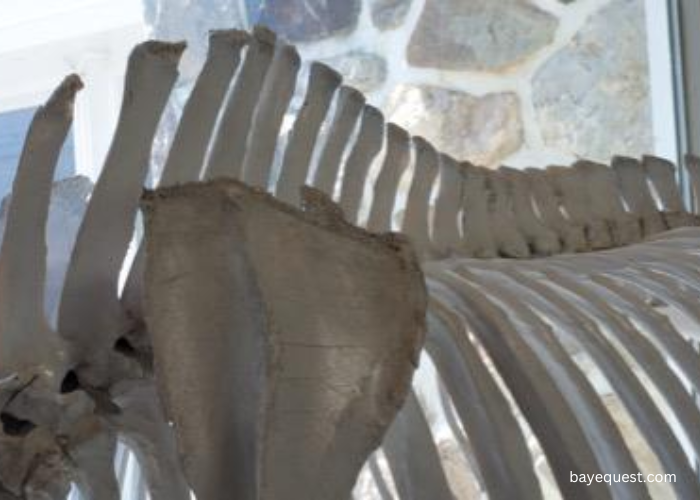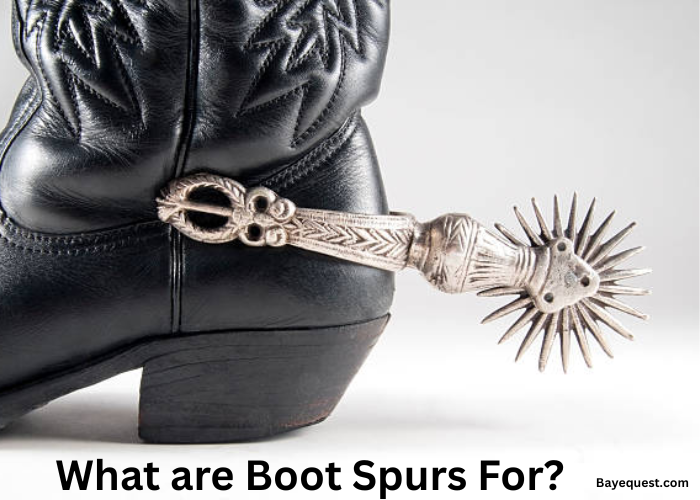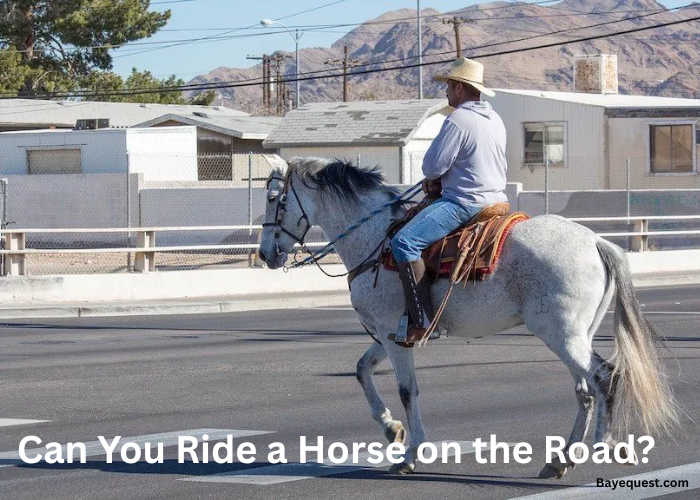Kissing spine is a painful condition that can hold your horse back.
It happens when the vertebrae in the spine touch or overlap, causing discomfort.
You may notice your horse acting stiff, refusing to move forward, or reacting to being saddled.
Left untreated, it can seriously affect their performance and well-being. But don’t worry, there are ways to manage it.
In this post, we’ll walk through the causes, symptoms, and treatments so you can keep your horse healthy and performing at their best.
Kissing Spine in Horses: Key Takeaway
Kissing spine, also known as Dorsal Spinous Process Impingement, occurs when the vertebrae in a horse’s spine overlap, causing pain. Common signs include stiffness, bucking, and reluctance to move. Treatments include injections, surgery, and physical therapy.
What are Kissing Spines?
Kissing spines, or Dorsal Spinous Process Impingement, is a condition where the bony vertebrae in a horse’s spine come too close together and may touch or overlap.
This contact can cause pain and discomfort, especially when the horse moves or carries a rider.
It’s most common in the thoracic region, where the saddle sits.
It can lead to reduced performance, behavioral changes, and difficulty in movement.
If left untreated, it can worsen over time, impacting the horse’s quality of life and ability to work.
Causes of Kissing Spine in Horses
Kissing spine in horses can develop for several reasons. Some reasons are:
1. Poor saddle fit
A properly fitting saddle is crucial for a horse’s comfort and spine health.
When a saddle doesn’t fit well, it puts pressure on the horse’s back, especially the thoracic spine.
Over time, this pressure causes inflammation and pain.
The horse adjusts its posture to avoid discomfort, which strains the back muscles.
This can lead to vertebrae moving closer together and eventually overlapping.
Poor saddle fit can also cause compensatory behaviors, making the condition worse.
2. Inappropriate training
Training that doesn’t match the horse’s physical development can be harmful.
If a horse is pushed too fast without proper strength and flexibility, it can strain the back.
Poor riding techniques, like bad posture or pulling too hard on the reins, can also cause stress on the spine.
Overworked back muscles get fatigued, leading to improper core use and spinal misalignment.
Without proper conditioning, weak spots develop in the spine, making the horse more prone to kissing spine.
3. Weak core muscles
Core muscles support the horse’s back and help distribute weight evenly.
When these muscles are weak, the horse can’t support its weight well. The added weight of a rider makes it worse.
This instability causes the vertebrae to move closer together, which can lead to kissing spine.
Horses with weak cores may also develop poor posture, adding strain to the back and increasing the risk of spinal problems.
4. Trauma or injury
Trauma can also cause kissing spine. A fall, a bad landing, or an accident can misalign the vertebrae.
When the vertebrae move out of place, they can come into contact and cause kissing spine.
Even small injuries, if untreated, can have long-term effects. The vertebrae may start to impinge, causing pain.
Horses with trauma might also change how they move to avoid pain, worsening the condition.
5. Predisposed breeds
Some breeds are more prone to kissing spine because of their body structure.
Thoroughbreds and Warmbloods, for example, tend to have longer backs. This makes their vertebrae more likely to touch.
These breeds often perform in demanding activities like jumping and dressage, which puts extra strain on their spines.
High-energy breeds that need a lot of physical conditioning are also at higher risk.
6. Conformation
Horses with long backs, swaybacks, or poor posture have vertebrae that are naturally closer together.
A swayback puts extra pressure on the vertebrae, and long-backed horses have less muscle support along the spine.
This imbalance makes it easier for the vertebrae to shift and touch. Activities that stress the spine can make this condition worse.
7. Genetic component
Genetics also play a role in kissing spine. Some horses inherit structural traits, like long backs or weak muscles, that increase their risk.
Certain bloodlines may be more prone to spinal issues because of skeletal or muscular development.
Breeding for speed or agility, without considering spinal health, can raise the chances of kissing spine in future generations.
8. Negative plantar angle of the hind feet
The alignment of the hind feet can affect the spine. A negative plantar angle happens when the horse’s heels are lower than its toes.
This changes the weight distribution, shifting more weight onto the forelimbs and spine.
Over time, this adds extra strain to the back and leads to spinal misalignment.
The horse may also adopt poor posture to compensate, increasing the risk of kissing spine.
Correcting this with proper hoof care can help reduce the risk.
Clinical Signs of Kissing Spines in Horses
The clinical signs of kissing spines in horses can vary, but here are the most common ones:
Stiffness
Horses with kissing spine often show stiffness in their movement. They may struggle to bend or flex their back properly.
Reluctance to move forward
Affected horses might resist moving forward under saddle.
They may become more irritable or resistant during movement, even at a walk. Pain from spine pressure makes them reluctant to move naturally.
Saddle discomfort
The horse may react negatively to being saddled. This can include flinching, bucking, or moving away when the saddle is placed on their back.
This is a response to the pain caused by pressure on their spine while carrying a rider.
Behavioral changes
Some horses may become irritable or show signs of aggression, especially when ridden. This could be a response to the pain they feel.
Difficulty with transitions
Horses with kissing spine might have trouble changing gaits, such as moving from a walk to a trot or a trot to a canter. They may also struggle with stopping or turning.
Loss of performance
You might notice a drop in the horse’s ability to perform, especially in activities requiring flexibility, such as jumping or dressage.
Muscle atrophy
Over time, the muscles around the horse’s back may begin to waste away. This muscle loss can make the spine appear more pronounced.
Sensitivity to touch
The horse’s back may become more sensitive to touch. Running your hand along the spine might cause a reaction of discomfort.
Hind end lameness
Lameness in the hind legs can occur due to the horse compensating for back pain. This makes them move unevenly, affecting their gait.
Weight loss
Chronic pain from kissing spine can lead to stress and discomfort, which might cause a horse to lose weight over time, especially if they become less willing to eat.
Cross cantering or difficulty maintaining a canter
Horses may switch between leads or struggle to hold a steady canter because the pain affects their balance and movement.
Pain when palpating or brushing the back
Gently pressing or brushing the horse’s back can cause pain.
Horses may flinch, tense up, or show signs of discomfort when touched in this area.
How are Kissing Spines Diagnosed?
Kissing spines are diagnosed through a combination of clinical exams and imaging techniques. Here’s how the process works:
Physical examination
The diagnosis often begins with a detailed physical exam by a veterinarian.
The vet palpates along the horse’s spine, feeling for areas of pain, heat, or swelling.
They also check for any muscle atrophy around the spine.
Observing the horse while it’s in motion is critical. Signs of stiffness, irregular gait, or reluctance to move can be early indicators.
The vet might ask the horse to perform various movements like bending, turning, and transitioning between gaits to assess flexibility and pain response.
X-rays
X-rays are one of the primary diagnostic tools for kissing spine.
These images show the structure of the vertebrae in the spine, allowing the vet to see if the dorsal spinous processes are too close or touching.
This proximity or overlap is the hallmark of kissing spine.
The vet can take multiple angles of the x-rays to ensure they capture a clear image of the affected areas.
X-rays not only confirm the presence of impingement but also help determine the severity of the condition.
Ultrasound
While x-rays focus on bone structure, ultrasound is used to examine the surrounding soft tissues.
This method can detect inflammation or damage to muscles and ligaments around the spine.
Ultrasound is helpful in revealing whether the soft tissues have been affected by the altered posture or movement caused by kissing spine.
This additional layer of imaging provides a more comprehensive understanding of the condition.
Bone Scintigraphy (Nuclear Scanning)
If x-rays or ultrasounds don’t provide conclusive results, bone scintigraphy, or nuclear scanning, might be used.
In this procedure, a small amount of radioactive material is injected into the horse’s bloodstream.
This substance highlights areas of active bone remodeling or inflammation, which can be linked to kissing spine.
The radioactive material accumulates in areas of increased bone activity, making it easier to locate the exact points of stress and confirm the diagnosis.
Local Anesthetic Injections (Nerve Blocks)
To confirm that the pain is originating from the spinal impingement, a vet may inject a local anesthetic into specific areas of the horse’s back.
This temporarily numbs the region, allowing the vet to observe whether the horse’s movement improves.
If the horse moves more freely and without discomfort after the injection, it strongly suggests that the kissing spines are the source of the problem.
Clinical history and observation
A thorough evaluation of the horse’s clinical history is an important part of the diagnostic process.
The vet considers changes in performance, behavior, or weight over time.
Horses that have shown signs of irritability, stiffness, or reluctance to work under saddle might have been developing kissing spine gradually.
How to Treat Kissing Spine in Horses
Here are some ways to treat kissing spine in horses:
1. Interspinous Ligament Desmotomy (ISLD)
Interspinous ligament desmotomy is a minimally invasive surgical procedure.
In this treatment, the veterinarian cuts the ligaments between the affected vertebrae.
These ligaments are often tight and cause the vertebrae to impinge.
By cutting them, the pressure is relieved, allowing the vertebrae to move more freely and reducing pain.
This procedure is relatively quick, and horses usually recover well with appropriate rehabilitation.
ISLD is effective for horses with mild to moderate cases of kissing spine.
2. Cranial Wedge Ostectomy
Cranial wedge ostectomy is a more invasive surgical option.
In this procedure, the veterinarian removes part of the dorsal spinous processes.
This creates space between the vertebrae, preventing further impingement.
This surgery is reserved for severe cases where other treatments haven’t worked.
However, recovery time is longer, and the horse requires careful rehabilitation, but the results will improve the horse’s quality of life.
3. Steroid Injections
Steroid injections are a common non-surgical treatment for kissing spine.
The veterinarian injects corticosteroids directly into the affected area of the spine.
These steroids reduce inflammation and provide pain relief, allowing the horse to move more comfortably.
Steroid injections don’t cure kissing spine, but they can manage the symptoms.
4. Mesotherapy
Mesotherapy is a technique used to relieve pain and inflammation in the muscles surrounding the spine.
In this treatment, the vet injects small amounts of medication into the layers of skin along the horse’s back.
This helps reduce muscle tension and improves blood flow.
Mesotherapy is often used alongside other treatments like physical therapy or injections to manage the pain associated with kissing spine.
5. Non-Invasive techniques
There are several non-invasive treatments that can help manage kissing spine in horses.
These include physical therapy, chiropractic adjustments, and acupuncture.
Physical therapy often focuses on strengthening the horse’s core muscles to better support the spine.
Stretching and conditioning exercises can improve flexibility and reduce strain on the back.
Chiropractic adjustments realign the spine, relieving tension and discomfort.
Acupuncture, on the other hand, targets specific points to relieve pain and promote healing.
These non-invasive methods are useful for mild cases or as part of a long-term management plan alongside other treatments.
What is the Prognosis of Kissing Spines?
The prognosis for horses with kissing spines depends on the severity and treatment.
For mild to moderate cases, the outlook is generally positive.
With non-invasive treatments, 70-80% of horses return to full work.
These horses can often perform at their previous level with regular maintenance and conditioning.
Surgical options, like ISLD have success rates as high as 85-90%.
Many horses can return to normal activities within 3-6 months after surgery.
More invasive surgeries, like Cranial Wedge Ostectomy, have a slightly lower success rate of around 70-80%.
Horses that follow a strict rehab plan, including core strengthening and flexibility exercises, have a 75-85% chance of long-term soundness.
However, untreated or severe cases have a poorer prognosis.
Horses may suffer from chronic pain and reduced performance, with only a 40-50% chance of returning to full work.

How Can Kissing Spines Be Prevented?
Preventing kissing spines in horses involves several key practices.
First, ensure that the saddle fits properly to avoid putting unnecessary pressure on the horse’s back.
Regularly check the fit as the horse’s body shape changes over time.
Proper training is also crucial. Horses should be gradually conditioned, with exercises that strengthen their core muscles.
A strong core supports the spine and reduces the risk of vertebrae impingement.
Additionally, regular veterinary check-ups can help catch any early signs of back pain or spinal issues.
Early intervention and consistent care go a long way in preventing kissing spine from developing.
Conclusion
Kissing spine can seem like a tough challenge, but with the right care, your horse can live comfortably and stay active.
Early diagnosis, proper treatment, and ongoing management are key to success.
Whether through surgery, injections, or physical therapy, many horses can return to full work and performance.
Don’t wait for the signs to get worse—acting early makes all the difference.
Keep an eye on your horse’s health, and remember that a strong back starts with good training, proper saddle fit, and regular vet care.
Your horse deserves the best chance at a pain-free life.



 Click To Subscribe
Click To Subscribe





